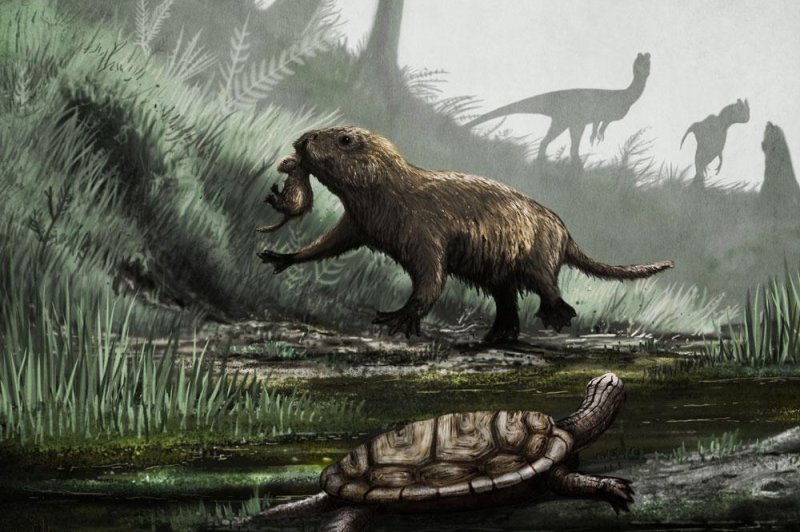Scientists believe the earliest mammals adapted to the night to avoid predation from dinosaurs. Mammals didn't begin exploring the daytime until the dinosaurs were wiped out some 66 million years ago. Photo by Mark Witton/UCL
Nov. 6 (UPI) -- Mammals became more active during the daytime after dinosaurs disappeared some 66 million years ago, according to a new study.
Today, 20 percent of all mammals are diurnal, or more active during the day. But previous research suggests the earliest mammals were exclusively nocturnal. Now, scientists have a better understanding of when and how some mammals made the transition from night to day.
Researchers at University College London and the Tel Aviv University's Steinhardt Museum of Natural History analyzed the activity patterns of some 2,415 mammal species. The scientists designed computer algorithms to trace the evolution of specific activity patterns and consider two different scenarios for how and when diurnal first evolved along different lineages.
Both scenarios produced very similar timelines.
"We were very surprised to find such close correlation between the disappearance of dinosaurs and the beginning of daytime activity in mammals, but we found the same result unanimously using several alternative analyses," Roi Maor, a doctoral student at UCL and Tel Aviv, said in a news release.
The analysis -- detailed in a new paper published this week in the journal Nature Ecology & Evolution -- suggests the ancestors of simian primates, like gorillas, gibbons and tamarins, were the first to abandon nocturnal activity and become active during the day.
Both scenarios suggest the transition wasn't immediate. Instead, the switch from night to day occurred gradually among a variety of species over several million years. The algorithms posit that the transition occurred roughly between 52 and 33 million years ago.
Primates are the only mammals who have adapted traits enabling improved eyesight in the daytime.
Scientists have hypothesized that the earliest mammals were forced to adapt to the nighttime in order to avoid interacting with dominant dinosaur species. When dinosaurs were wiped out, the daytime was less threatening, offering adaptive species an opportunity.
"It's very difficult to relate behavior changes in mammals that lived so long ago to ecological conditions at the time, so we can't say that the dinosaurs dying out caused mammals to start being active in the daytime," said UCL professor Kate Jones. "However, we see a clear correlation in our findings."















